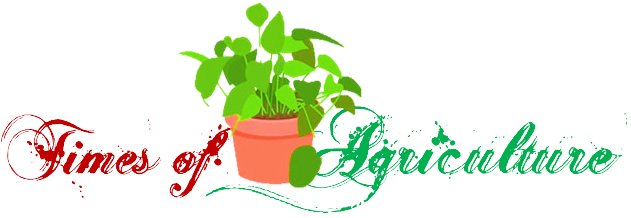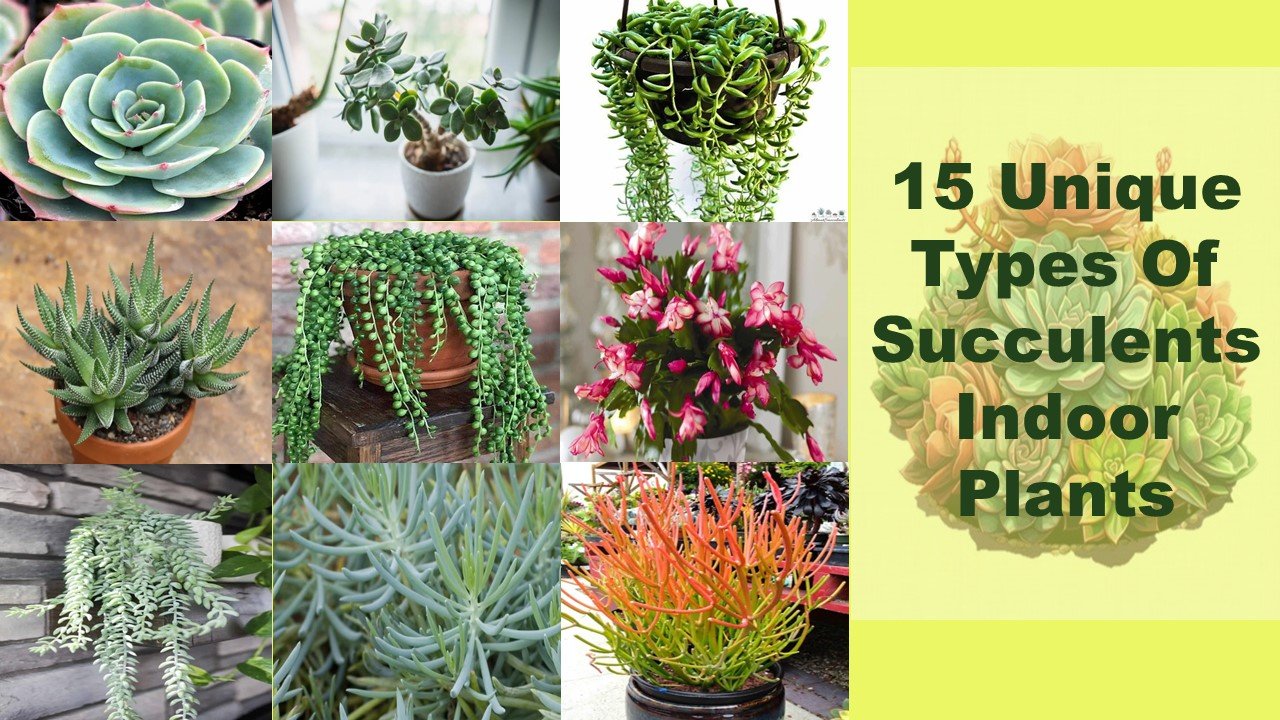15 Unique Types Of Succulents Indoor Plants
Are you having an experience with growing succulents? Succulents are a great addition to interior decor and are preferred very often by most people who wish for a natural green touch to their homes. Apart from their visual beauty, succulents are low-maintenance plants. Their unique adaptation of storing water in their stem or leaves allows them to survive in hot and arid climatic conditions and can survive even without watering them for days to weeks.
People who have the least exposure to gardening activities and who are busy gardeners can easily opt for succulents. The diverse and unique forms of succulents make them be used as a single specimen plant added to mixed plantations or even as a tabletop plant. There are different types of succulents indoor plants. Of many types of succulent plants indoors and outdoors, the best fifteen indoor succulents are listed below. Let’s peep into this.
15 Types Of Succulents Indoor Plants
Aloe Vera
Aloe vera, who says no to an aloe vera in the house. Aloe is one of the types of indoor succulent plants that has a good medicinal profile and also ornamental value. It is easy to care for and requires the least maintenance of all. The leaves are lance-shaped and hold a transparent gel that is used in the cosmetic industry They can also be used to heal the skin and offer a great soothing and moisturizing effect to the skin. It does not attract any pests or mosquitoes. Mind the spines present on the leaves if you are also a pet lover.
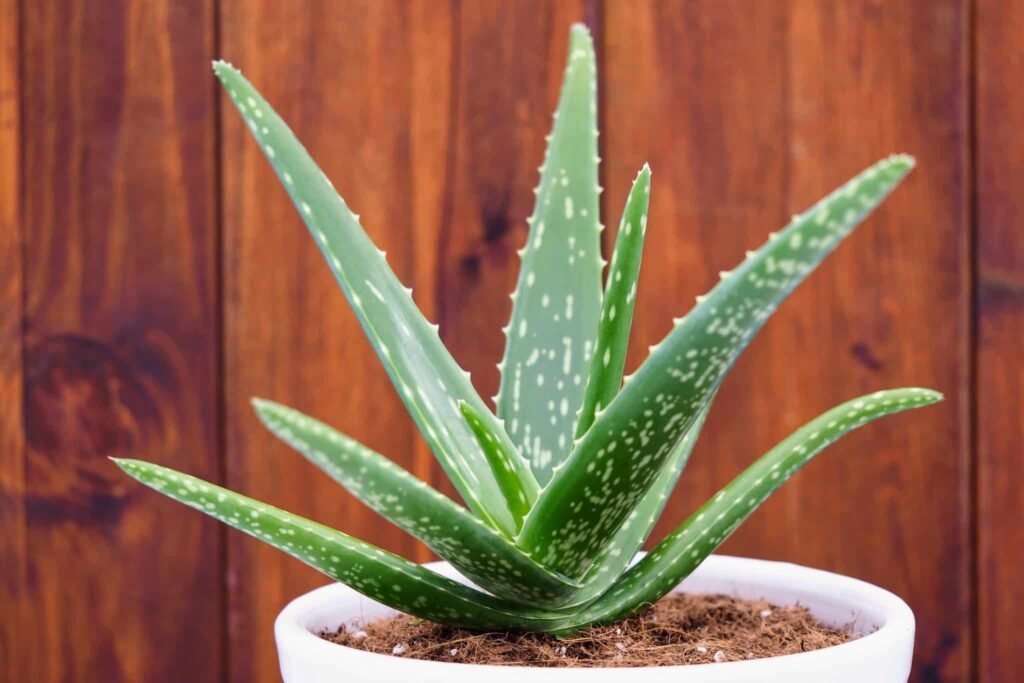
Echeveria
The stunning petals and the rosette appearance of echeveria make it a mandatory plant to pick when you visit a nursery. They require a good amount of sunlight and can tolerate inadequate watering. Echeveria is a popular choice for rock gardens container gardens terrariums and what not! The plant is easy to care for and the propagation method is at least to be bothered. Of all types of succulents indoor plants, echeveria has its own stunning and elegant look.
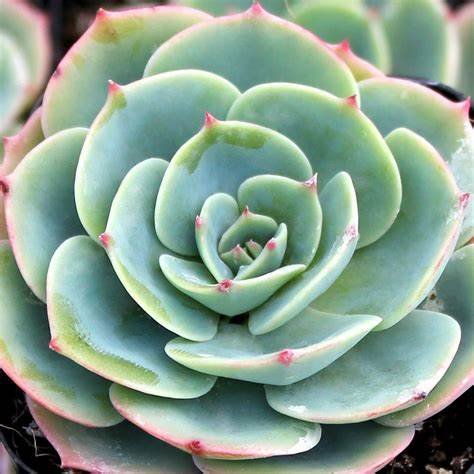
Haworthia
These plants are in close relation with other succulents like Aloe vera and Gasteria plants in some or the other way. It has lance-shaped leaves like aloe vera and also are little spiny. The leaves show distinct alternate stripes just like a zebra-like pattern. The spiny nature and the stripes make them appear a little wild and are least preferred to be placed as a specimen plant indoors. But, haworthia is one of the popular choices of succulents to be placed in terrariums or container gardens. The leaves are placed the same as aloe vera plants in a rosette manner
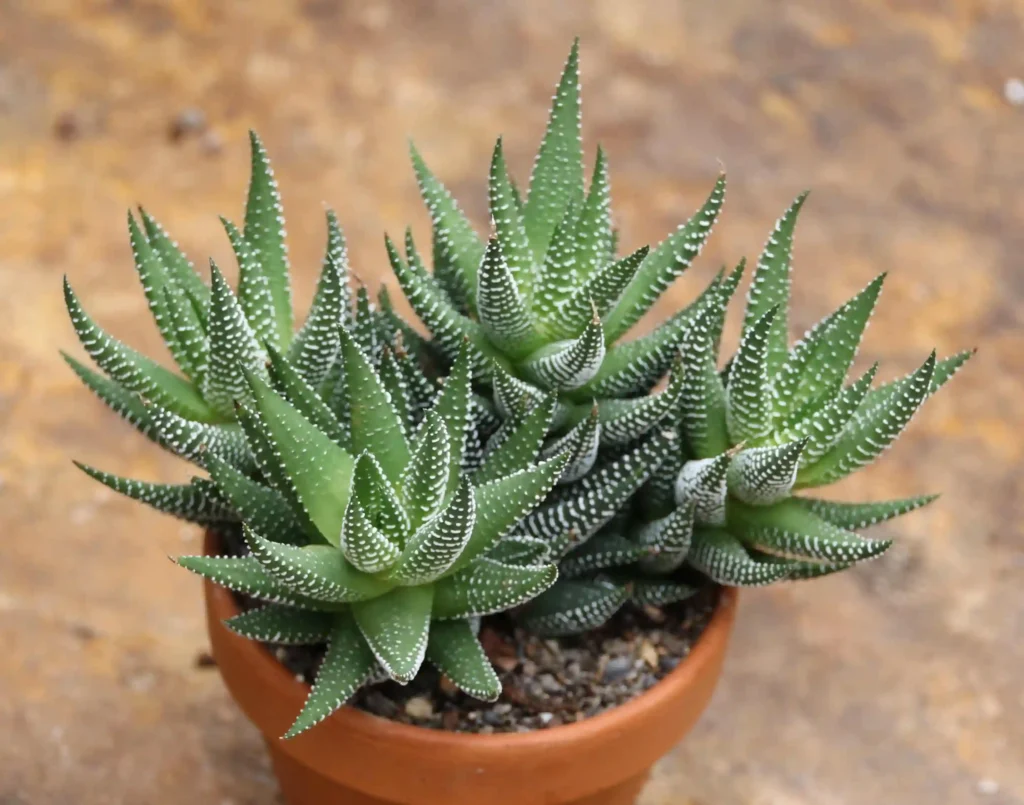
Gasteria
These plants are prominently known for their wild and exotic like appearance. These plants are of course easy to care for but require a lot of attention. These plants are adapted to low light conditions in their native regions and are perfect plants for growing indoors as they do not require much sunlight. When I say this, it means it requires low sunlight when compared to other succulent species.Some of the species of this plant also possess medicinal properties and are used to treat few burns and wounds.
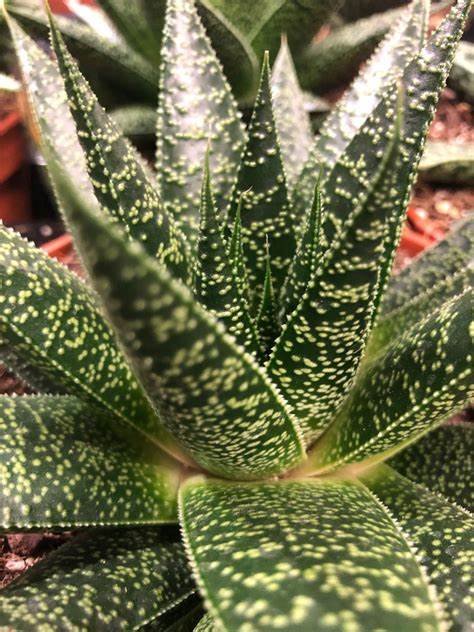
Jade Plant
The moment you hear about a jade plant, the first thing that should strike your mind is that jade is known as a symbol of luck. Jade plant has thick leaves that are oval-shaped and show a distinct pattern of arrangement. It is the most iconic succulent that is said to bring fortune and can be placed in both indoor and outdoor spaces. It survives for many years even with the least care and maintenance. It might grow too long in irregular directions and require occasional pruning to maintain its proper shape. Of all the types of succulents indoor plants, jade is called the lucky succulent plant.
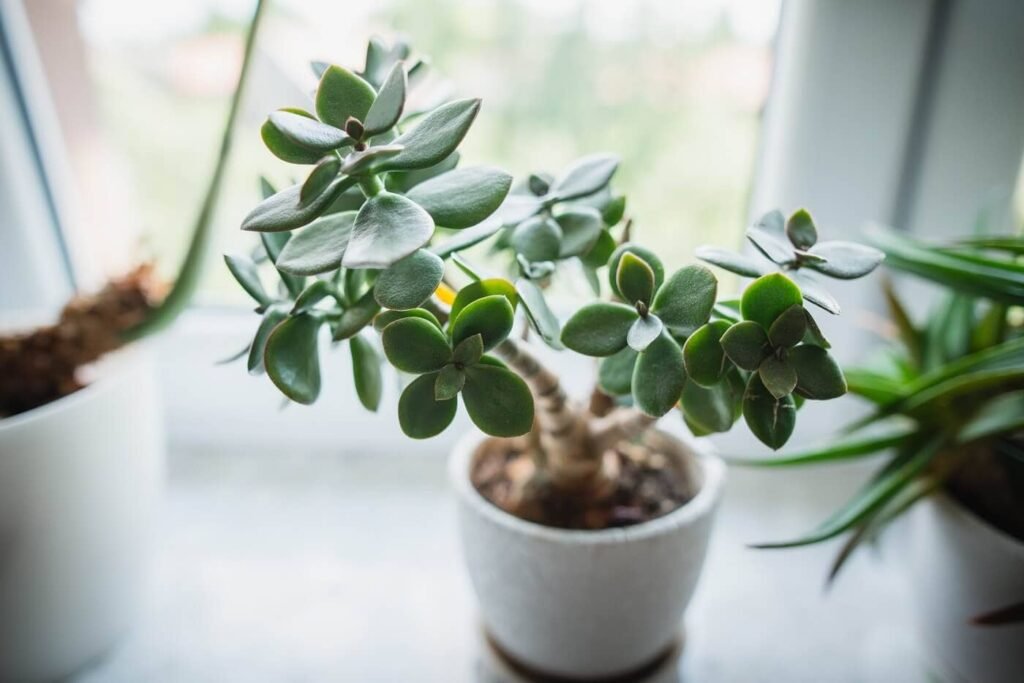
Snake Plant
The name itself reveals its appearance. It is scientifically named as Sansevieria. It also has other pet names like Mother-in-law’s Tongue or Saint George’s Sword. The snake plant is one of the types of succulent indoor plants whose leaves look slender and wavy. It has air purifying properties which makes it popular choice to be placed indoors Studies also revealed that snake plants can improve the air quality making them an excellent choice to be placed in living room or bedroom.
Among different types of indoor succulent plants, the snake plant is relatively easy to maintain. IThey are much more resistant to pests and diseases and can also tolerate little negligence. Frequent dry-outs have to be allowed to prevent the attack of root rot.

Zebra Plant
The Zebra plant has glossy striped leaves. The plant is named so because of the stripes on the leaves that resemble exactly a zebra’s body. The plant also produces small yellow flowers at the tip. The range of colors goes from orange to yellow which adds a striking appearance to the plant. The plant should not be placed in direct sunlight as it may scorch the leaves. The plants love humidity so regular misting can be done to create a humid environment as they prefer. Warm temperatures are fine but the plant cannot withstand cold and frost.
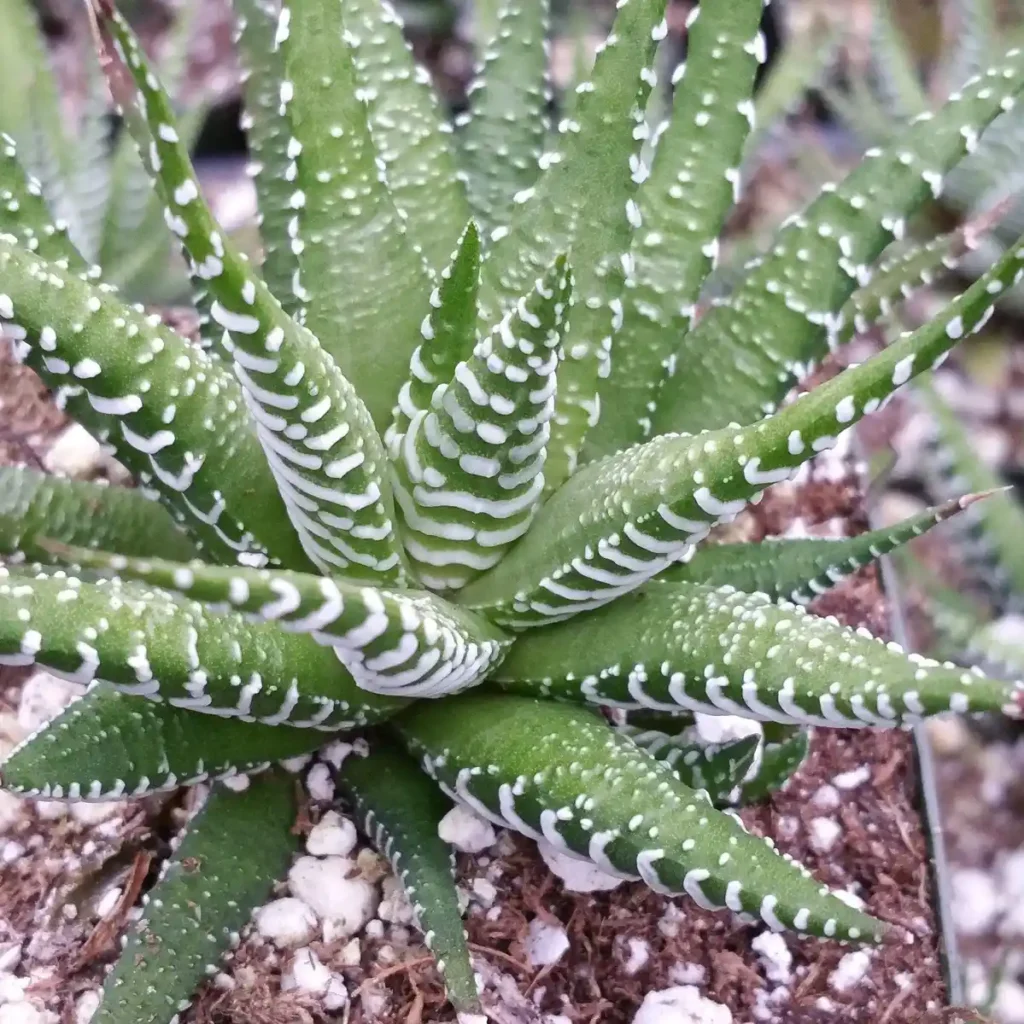
Panda Plant
The panda plant is scientifically a species of Kalanchoe. The leaves are covered with fine white hairs that give a velvety texture. The leaf edges often show serrations. The overall appearance of the plant resembles a panda hence the name. They require well-drained soil to prevent waterlogging and thereby root rot.

Burro’s Tail
Burro’s tail is more than just a tabletop plant and has a trailing nature. This plant is perfect for a hanging pot and can trail up to a minimum of three feet height that gives a creeper appearance but is not. The stem of the burro’s tail grows quite long and also can be hung in a container planter. It must be grown only indoors and can thrive outdoors in mild climatic conditions.

String of Pearls
As the name says, the leaves of this plant are small, spherical bead-like which are arranged in a chain-like manner giving a string of appearance. It has a cascading growth habit and can be placed in hanging baskets or a container garden as a trailing accent. It can be propagated easily through stem cuttings. Snip off a healthy stem and allow it to settle for a few weeks and you are done. New plant starts growing and can be shifted to other pots.

String of Bananas
String of bananas gets its name from its leaves which look like a tiny banana. Like a string of pearls, this plant also has a trailing nature but has characteristic banana-like leaves hence the name. The leaves are arranged in a string-like manner. It is widely grown as an indoor plant and cannot thrive in extremely warm climates
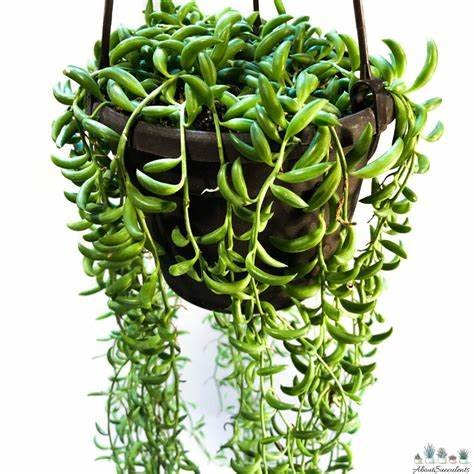
Crown of Thorns
It is scientifically called as Euphorbia. It is the native plant to Madagascar. It is perennial and produces flowers year round particularly when the climate is warm. It should be watered regularly and can also tolerate a period of drought in between. It can be grown even outdoors considering the climate.

Christmas Cactus
The Christmas cactus plants have flattened stems. These stems almost resemble leaves which are scientifically termed as a modified stem. The stems have serrated margins and also produce pink flowers at the tips. The blooming season might vary from species to species and depends on the type of cultivar and also the climatic conditions. These plants should be protected from over-watering as they may be damaged from root rot. Watering needs to be done when the top few inches of soil dries out.
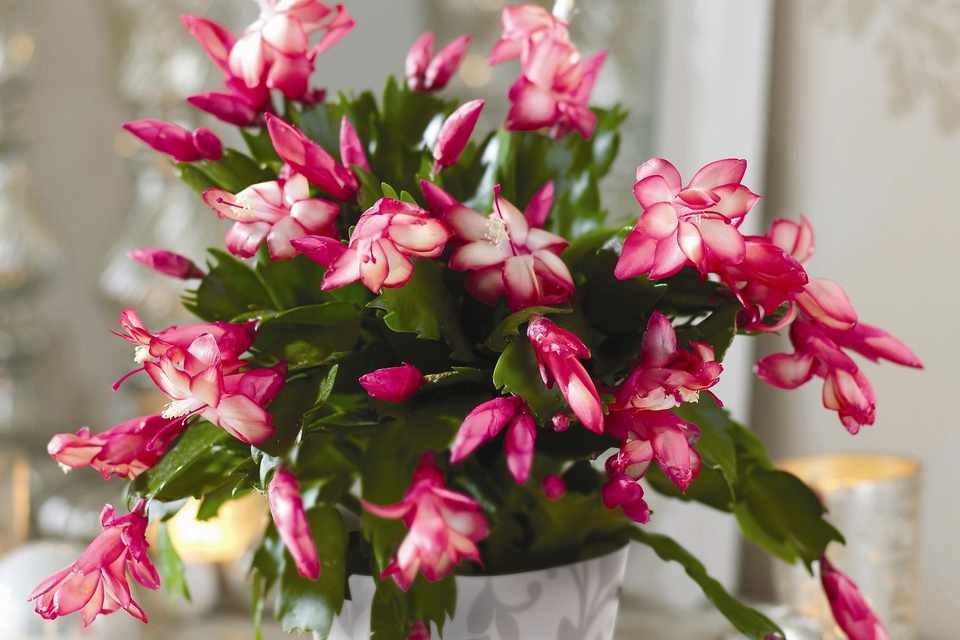
Senecio
Some of the most popular species are a string of hearts, and a string of bananas as mentioned above. This succulent can be used to create green ceilings. They can be grown indoors and should be properly taken care of to maintain the plant in a healthy condition and ensure its natural growth.. It has attractive foliage and their trailing habit makes them to be placed in containers or other pots to give a green trailing look.

Firesticks
The firesticks plant is also known as sticks on fire. It has a very great architectural form and comes in vibrant and radiant colors. It has upright and slender stems that resemble a stick. The foliage appears green but the stems look a little red or orange during its active growth period hence the name firestick owing to its stick-like appearance. Firesticks is one of the types of succulents indoor plants whose stem gives a fire like appearance. Utmost care has to be taken when handling these plants while cutting or pruning because the milky latex-like sap produced by the stem during occasional cuts can be irritating to the eyes and skin. Hence, proper care has to be taken.

| Name of the plant | Scientific name | Special Features |
| Aloevera | Aloe barbadensis | Good medicinal properties |
| Echeveria | Echeveria spcs | Fantastic petal arrangement |
| Haworthia | Haworthia fasciata | Stunning leaves with spines & stripes |
| Gasteria | Gasteria disticha | Stunning leaves with spines & stripes |
| Jade | Crassuala ovata | Symbol of luck |
| Snake | Dracaena trifasciata | Long & slender leaves |
| Zebra | Aphelandra squarrosa | Striped leaves |
| Panda | Kalanchoe tomentosa | The fur and velvety appearance |
| Burro’s tail | Sedum morganianum | The leaf arrangement & trailing nature |
| String of pearls | Curio rowleyanus | The leaf arrangement & trailing nature |
| String of bananas | Curio hallianus | The leaf arrangement & trailing nature |
| Crown of thorns | Euphorbia milii | The flowering nature |
| Christmas cactus | Schlumbergera truncata | The pattern of leaf arrangement |
| Senecio | Senecio vulgaris | The soft and succulent leaves |
| Firesticks | Euphorbia triucalli | The aggressive fire like appearance |
Conclusion
This is all about different types of succulents that probably prefer indoor conditions and can come up well with low care and maintenance. Based on your requirements, you can choose the best succulent among all the types of succulents indoor plants. Under-watering or over-watering can put the plant’s health at stake. It would be better to go for a finger test and water them accordingly.
Touch the top few inches of the soil with your finger and if you feel the soil is dry, then water them using a sprayer. Direct watering can create a water-logged condition and can cause root rot. Using a sprayer can deal with this issue and can distribute the water uniformly without making the media wet but keeping it moist enough to survive. There are many types of succulents indoor plants. Which is your favorite one?
